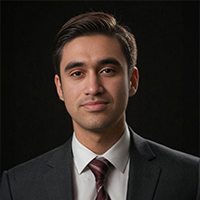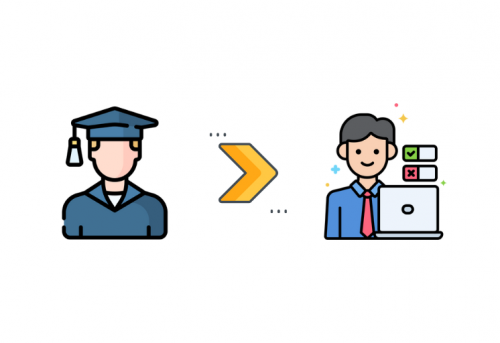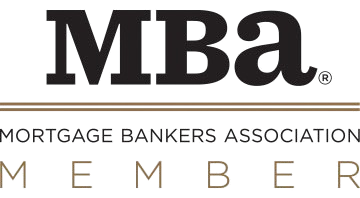Editorial Integrity
Moving to the US can feel overwhelming, filled with unknowns and uncertainties. HomeAbroad editorial team includes certified immigration experts/USCIS nerds who translate complex legalese into clear, actionable moving and visa guides. Rest assured, every article undergoes a reader-centric editorial process to ensure accuracy and reflect current regulations.
Many foreign students studying in the United States on an F1 visa think about several opportunities for working in the country permanently. One alternative is to switch from an F1 visa to an H1B visa directly (if possible), and another option would be to transition from F1 to H1B by following the F1 to OPT to H1B path.
OPT (optional practical training) is an option for F1 students who are applying for H1B visas. After graduation, F1 students who take part in OPT have a transition period during which they may gain work experience in their specialty field and search for an employer who will sponsor their H1B visa.
In this article, we’ll show you how to go from an F1 visa/OPT to an H1B visa.
Table of Contents
What is OPT?
The OPT period often referred to as Optical Practical Training or simply OPT, is the time during which a foreign student in F-1 status may work in a field that is directly related to his or her major studies.
The student must have finished or be seeking a degree in order to be eligible for OPT, and they must have maintained their status for a period of nine months in a row (generally, 2 semesters).
Involving either pre-completion OPT, post-completion OPT, or both, eligible F1 students may:
The student must apply for and get an Employment Authorization Document before beginning employment after receiving approval for OPT from the foreign student adviser at the educational institution.
What Is An H 1B Visa?
An H 1B visa is a non-immigrant visa that allows foreign workers to temporarily live and work in the United States for up to six years. In order to qualify, workers must have at least a bachelor’s degree or the equivalent of work experience in their field.
A specialist occupation may only be temporarily employed with an H 1B visa. The H 1B visa is available to three categories of workers:
In other words, the H 1B visa is an employment-based visa that enables American companies to hire people for specialized jobs that need at least a bachelor’s degree and the theoretical and practical application of specialist knowledge.
The H 1B visa enables foreign professionals to:
To know more about the H1B Visa, please refer to this Complete Guide on H1B Visa!
How to Change Your F1 Visa Status to OPT
If you want to change your F1 visa status from student to OPT, you need to:
Applying for OPT is a three-step process:
Step 1: The student submits the OPT application to their DSO (Designated School Official).
Step 2: The DSO enters the OPT recommendation into the Student and Exchange Visitor Information System (SEVIS).
Step 3: Properly file Form I-765, Application for Employment Authorization with USCIS, accompanied by the required fee and the supporting documentation as described in the form instructions. The student then pays the I-901 SEVIS fee and submits the OPT application to USCIS.
Once the OPT application is approved, the student will receive an Employment Authorization Document (EAD). The EAD will allow international students to work for any employer in their field of study for up to 12 months.
If the student wants to extend their OPT, they must submit an I-765 form before their OPT expires. The extension will allow the student to work for an additional 24 months. Students on OPT can only work for 20 hours per week while school is in session. During breaks and holidays, students can work full time.
How to Change Your F1/OPT Visa Status To H1B?
Many students on F1 Visa or Optional Practical Training (OPT) wonder how they can continue working beyond its expiration. The H 1B visa is a common option for students because it allows international students to temporarily live and work in the United States for up to six years.
To change the visa status from F1 to H1B, follow these steps:
Step 1: Locate a Company Willing to Submit an H-1B Application on Your Behalf.
Find an employer who is ready to file an H-1B petition on your behalf if you are an F-1 student looking to switch your status from OPT to H 1B. There is no necessity that the H 1B petitioner and the OPT employer be the same, despite the fact that this is typically the company you work for while on OPT.
Step 2: Employer Files Petition for H1B Visa
The company must electronically register you during the relevant H 1B Cap registration period once you have accepted a job offer from an employer in the US USCIS will hold the lottery if the number of registrants is greater than the H 1B Cap. After that, commencing on April 1 and continuing for at least 90 days, the petitioner must file the petition to USCIS if your H 1B registration is chosen in the lottery.
Step 3: Beat the H1B Cap
A job offer by itself is insufficient. Only 65,000 H-1B visas are available overall through USCIS under the ceiling for the general category, with an additional 20,000 visas reserved for applicants with master’s degrees or higher from the United States. You must make sure that the H-1B electronic registration is submitted on time if you want to be granted H-1B status during a fiscal year.
Unfortunately, even then, it’s not guaranteed that you’ll get into the H 1B visa cap. USCIS has held an H 1B Cap Lottery to select applicants for an H 1B visa every year for the past few years.
Step 4: Look for Cap-Gap Extension
During the period of time when a student’s status and/or work authorization would otherwise expire, certain students with pending or approved H-1B applications may remain in F-1 status in the United States. Therefore, if you anticipate finding yourself in such a circumstance, do not panic and see if you qualify for “Cap-Gap.”
Step 5: Apply for Labor Conditions
Upon filing your H-1B petition, your employer will need to submit a Labor Condition Application (LCE). The Employment and Training Administration of the US Department of Labor receives this form. A Form ETA 9035/9035E is filed to apply. The LCA will be valid for up to three years of employment once it has been authorized.
Your employer is required to attest to certain aspects of your employment in an LCA. This is used by the Department of Labor to confirm that the necessary working conditions have been met.
Step 6: Finish Form I-129.
The application for your change of status from an F-1 to an H-1B visa is made using Form I-129. As soon as this application is submitted and accepted, you can begin employment under your H-1B visa. Visit this page for additional information about Form I-129.
What Are The Requirements For Change of Status From F1 to H1B Visa?
There are a few key requirements that you’ll need to meet in order to change your status from F1/OPT to H1B:
Form I-129 is the only document you need to use to switch from F1 to H-1B status. This form must also be signed by an authorized individual, typically the person in charge of hiring new employees at the company that is petitioning for your H-1B visa.
Filing Charges
There are several fees associated with the change of status procedure that you must pay.
- The Form I-129 filing fee of $460.
- The ACWIA fee is determined by the size of the business and is either $750 or $1500 if the sponsoring employer has more than 25 employees.
- Fee for fraud detection and prevention: $500
- Only in a few situations $4000
- Supporting Documents for Your Petition
Documentations for F1 to H1B Visa
Include the following supporting documentation with your I-129 to prove your petition:
- A copy of your F1 Visa.
- Evidence of graduation and transcript
- A job offer letter from a US company confirming that you have an open position is required; it must include: your title, the duties of the position, a description of the position, and your salary.
- A copy of the US Company Labor Condition Application’s certificate of formation
- Evidence that the business is real (tax returns, website, social media, etc.)
- Your biographic information (full name, date, place of birth, marital status, etc.)
- A copy of your resume
- A copy of the relevant pages of your passport
- A copy of your degree
- All your transcripts
- Any course certificates
- Information about any award related to your occupation or field of expertise
- Experience letters containing your titles and dates of employment
- Copies of your Form I-20
- Copies of your current I-94 card
- If applicable, a copy of your Employment Authorization Document
What are The Costs of Filing for an H 1B Visa from F1?
A few fees are associated with requesting a change of status from an F-1 to an H-1B visa. Fortunately, your sponsoring employer will pay for the majority of these expenses.
Every employer will be required to pay a specific set of costs. The specific fees that your employer will be required to pay will vary depending on the size of the business and a number of other factors.
Here is a brief explanation of the various fees:
Base Fees
Each petition requires a $460 base filing fee, which is paid by all employers.
American Competitiveness and Workforce Improvement Act of 1998 (AICWA) Fee:
Employers with 1 to 25 full-time employees must pay $750; those with 26 or more full-time (or equivalent) employees must pay $1,500.
Fraud Detection and Prevention
Only applies to new H-1B and change of employer petitions; the fee is $500. H-1B petitions with a base in Chile or Singapore are exempt from this rule.
Fees under Public Law 114-113
Your employer is required to pay this fee of $4,000 if it has 50 or more workers and more than half of those workers are L-1 or H-1B visa holders.
Premium Processing Fees (Optional)
For an additional $1,225, you can choose to pay to have your petition processed in under 15 days.
Immigration Lawyer Fees
Immigration lawyer fees can vary; this only applies if you or your employer hires a lawyer to help you with your immigration situation. Depending on the immigration lawyer you choose, the cost will change.
What is the Processing Time for an H 1B Visa?
The processing time for an H 1B Visa is anytime from a few weeks to a few months. Depending on the application, the processing time for H 1B visas can vary significantly and take up to 6 months.
There are many H-1B applications submitted to USCIS. To give you an idea, 233,000 applications were received for the fiscal year 2015–16. A computer-generated lottery system is used for the selection process, which will choose the petition at random in order to reach the necessary cap limit (20,000 for an advanced degree and 65,000 for the regular H-1B cap). The application fees paid by those who were rejected would be reimbursed.
If you file for Premium processing, you will hear back from USCIS within 15 business days. However, the premium processing doesn’t guarantee your selection in H 1B visa lottery. Through the online automated system of the USCIS, you can keep track of the progress of your application.
Frequently Asked Questions
Can You Transfer from F1 to H1B?
Yes, you can transfer your visa status from F1 to H1B. It can be done either directly or via the OPT route.
Can F1 Students Apply for H-1B Without OPT?
The option of practicability training (OPT) is not required for the switch from F1 to H1. However, to qualify for an H1B visa, you must demonstrate that you have completed a college degree that qualifies you for the position in a specialized knowledge field.
Can I Apply for H1B Without a Job?
No, this is not possible. To apply for this visa, you must have a job offer from a US company or organization that is ready to sponsor your transition.
Can I Apply for H1B While Studying?
The answer is yes. You can apply for an H1B visa before you have finished your studies. However, you should be employed, and the employer should be willing to sponsor your transition. The application process must be started on the employer’s behalf by the employer.
US employers who intend to file an H-1B petition for a foreign worker on April 1st may still do so even if the worker has not graduated or received their diploma, so long as he/she has completed all of the coursework towards the degree.
How Can I Transition From F1 to H-1B Without OPT?
You should be aware that you must be able to prove that you received a degree that qualifies you for the position if you want to transition from an F1 to an H-1B without OPT. Therefore, we strongly discourage you from applying for OPT too soon. You will typically use your H-1B during OPT because OPT usually begins after you have graduated.
Can You Apply for an H-1B during OPT?
Yes, you can apply for an H-1B during OPT. However, you should only apply for OPT after you have graduated. OPT typically begins after you have graduated, so you will generally use it for your H-1B during OPT.
How Long Does It Take to Switch from F1 to H1B?
Although it may vary from case to case, processing for an H-1B transfer typically takes 4-8 weeks after applying to USCIS. However, depending on the number of petitions filed and the workload of USCIS, they process H1B visa petitions anywhere from a few weeks to a few months. If you file for Premium processing, you will hear back from USCIS within 15 business days.
Other factors that affect the H-1B transfer process length are the location of employment and which USCIS processing center is responsible for the application.
What is the Difference Between an H-1B and an OPT?
The OPT is a temporary visa that allows you to work in the United States for up to one year after you graduate. The H-1B is a more permanent visa that will enable you to work in the United States for up to six years. OPT is typically used to transition from an F1 to an H-1B, while the H-1B is more often used to transition from an L-1 to an H-1B.
How many Master’s Students in the US apply for H1B?
In 2020, USCIS released the overall applications they received in the year. Of that, they say about 46% of the petitions filed were in the US Masters Category, which comes down to 126,500 applications or registrations.
What Are The Reasons my H1B Visa Might be Denied?
Here are a few reasons why your visa might get denied by the USCIS:
If an employer or a company appears to be fraudulent, unprofessional, or lacks trust and is not in a position to hire and pay the worker.
The employer does not provide evidence that an employee-employer relationship exists.
The applicant does not have the required education or experience.
The required “specialized knowledge” is not met by the employment offered.
What Happens If My H-1B Request Is Rejected?
For particular reasons, USCIS might not approve your change of status when you transition from an F1 to an H-1B. You can appeal the decision made regarding your change of status application. To fully comprehend the situation, it is best to discuss the procedure and strategy with a knowledgeable immigration lawyer.
Do not hesitate to act as soon as you learn that your application for a change of status from F1 to H1B has been denied, if your ability to remain in the country is limited.
Can Students Apply for H-1B Status Themselves?
No. The application process must be started on the employer’s behalf by the employer. A student must work for an employer who will file an H-1B petition on his or her behalf.
How Long is the H-1B Validity Period?
The typical H-1B validity period is three years, but it can be extended to six years in some cases. The visa can be renewed an unlimited number of times for certain employment positions.



















